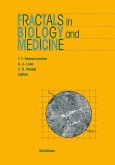The thyroid gland first appears in the phylogenic scale in the Lamprey larva, Ammocoetes, at the time of metamorphosis (see review by Constantinescu, 1972). In higher Vertebrates the adult thyroid gland consists of vesicles i. e. thyroid follicles containing colloid and lined with a cubic or prismatic epithelium. Since the end of the 19th century, many authors have studied the morphoge nesis of the follicles during the embryonic and fetal development of the gland in Man and other species, principally Chick, Rat and Rabbit. The development of techniques for culturing organs of higher animals, in particular the thyroid by Carrel and Burrows (1910) and Champy (1914, 1915), allowed the study of the survival in vivo or in vitro of grafts or explants of thyroid gland obtained from adult or fetal animals. In addition to organotypic cultures, techniques for culturing cell suspensions obtained by enzymatic dissociation have recently been refined. Moreover, histological examination of pathological human glands and adult thyroids experimentally stimulated by thyrotropin hormone (TSH) has provided additional data for the understanding of thyroid follicle morphogenesis.
Hinweis: Dieser Artikel kann nur an eine deutsche Lieferadresse ausgeliefert werden.
Hinweis: Dieser Artikel kann nur an eine deutsche Lieferadresse ausgeliefert werden.








